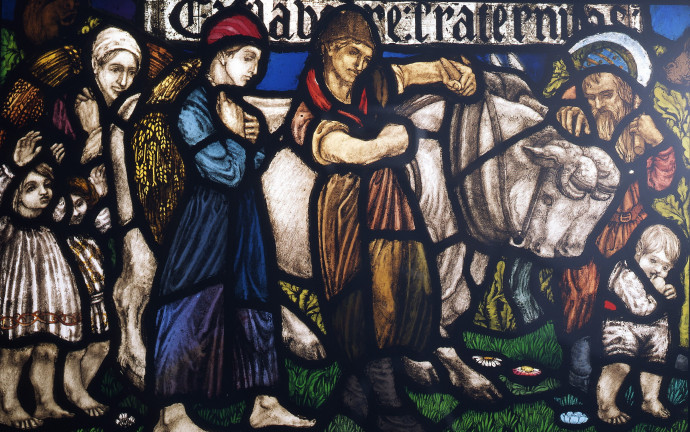Mabel Esplin studied stained glass under the tutelage of Christopher Whall (1849-1924), the leading practitioner and teacher of the craft in the turn-of-the-century Arts & Crafts Movement. Esplin attended Whall’s classes at the London County Council’s Central School of Arts & Crafts and probably also worked in his studio-workshop at 1, Ravenscourt Park, Hammersmith. On completing her studies, she set up her own studio in Hampstead, though the firing and glazing of her painted glass was always carried out at Messrs. Lowndes & Drury’s ‘Glass House’ at Fulham. This panel was probably made while Esplin was still a student. In its use of slab glass in intense, jewel-like colours and its relatively loose style of glass-painting, it is typical of the Arts & Crafts idiom developed by Whall and his school.
Esplin was a member of the Women’s Guild of Arts and a supporter of women’s suffrage. She and Mary Lowndes designed emblems for the International Women’s Suffrage Alliance.
In 1911 she received an important commission to design and make all of the windows for the new Anglican cathedral at Khartoum in Sudan, but in 1916, she suffered a serious mental illness which prematurely ended her career and led to her early death. The commission was completed by her former assistant, Joan Fulleylove.

